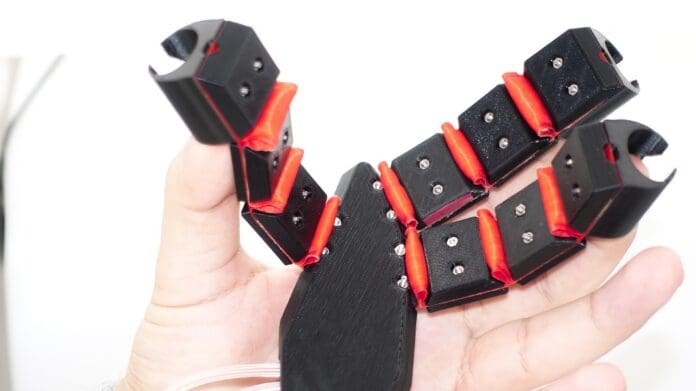This post is also available in:
 עברית (Hebrew)
עברית (Hebrew)
A new pneumatic-driven soft robotics platform is offering a fresh approach to lifelike haptic feedback across virtual reality, rehabilitation, and human-machine interaction. Developed at EPFL, the system—named “Digits”—uses compressed air to change shape, stiffness, and produce vibrations, opening the door to highly customizable and responsive tactile devices.
The innovation lies in its modular design: individual robotic units, or “Digits,” are composed of rigid segments joined by flexible air-actuated joints. According to the press release, when pressurized, these joints adjust their mechanical behavior in real time, enabling the system to mimic complex physical interactions such as grasping, pressing, or tapping.
While the underlying mechanics are relatively straightforward, the Digits framework supports up to 16 different configurations, giving it an unusual degree of flexibility. Two prototype applications have already demonstrated its versatility: the wearable TangiGlove, which wraps around a user’s hand to simulate tactile sensations, and the TangiBall, a handheld object capable of shape-shifting between forms such as spheres and cubes.
Haptic feedback—the ability to “feel” digital interactions—has long lagged behind other sensory technologies like audio and visual effects. Existing solutions often serve narrow use cases and struggle to reproduce the wide range of physical sensations human touch can detect. The Digits framework addresses this gap by bridging two major structural categories in robotics: open-chain designs, like robotic arms, and closed-chain loops, which provide more stability and complex motion.
The system also benefits from an expanded version of the open-source Feelix software, enabling users to create personalized touch feedback profiles powered by machine learning. This allows for intuitive interaction design without needing to write code, and can automatically adapt to user inputs by sensing changes in pressure and motion.
By focusing on pneumatic actuation—a relatively underutilized method in haptics—the Digits framework combines soft robotics with intelligent sensing to deliver realistic, adaptable tactile feedback. With potential applications ranging from physical therapy to immersive VR, this technology could reshape how users physically engage with digital environments.
The study was published in Advanced Intelligent Systems.

























